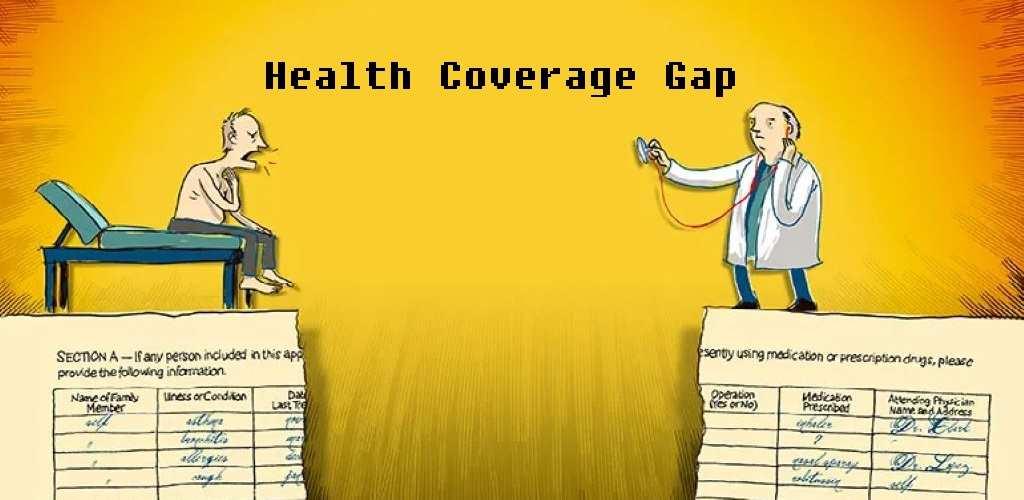The Insurance Regulatory and Development Authority of India (IRDAI) is all set to launch an all-in-one insurance plan. This single policy, which takes a multifaceted approach, combines various insurance protections. Let’s understand what it actually entails!
——————————————————————————————–
The Insurance Regulatory and Development Authority (IRDA) is developing a new, cost-effective bundled product (all-in-one policy) to protect citizens against a variety of risks and is attempting to expedite claim settlements by connecting death registries onto a single industry platform in an ambitious attempt to increase the low insurance penetration in the nation.
The purpose of IRDAI’s “Bima Trinity,” an inexpensive bundled product, is to offer citizens complete coverage for health, life, property, and accidents. The integration of death registries onto a single industry platform is another way that this plan expedites claim settlements. Households throughout India stand to gain from the all-in-one policy if it is implemented successfully since it provides comprehensive coverage, speedy claim settlements, and value-added services like yoga or gym memberships.
Bima Trinity: Transforming Insurance in India
The insurance coverage gaps that are still present in a number of industries, such as life, health, motor, property, and agriculture, are acknowledged by the IRDA. As a result, they are working with general and life insurance companies to implement their Bima Trinity plan to bring about a revolutionary “UPI-like moment” in the insurance sector. The goal of this all-inclusive strategy is to offer citizens a packaged insurance solution that takes care of several risks while maintaining accessibility and affordability. These are a few of the all-in-one plan’s goals.
- To provide a reasonably priced package of insurance that addresses risks related to health, life, property, and accidents.
- To connect death registries onto a single platform in order to speed up claim settlements.
- To establish a “UPI-like moment” in the insurance industry, akin to the banking industry’s Unified Payments Interface (UPI).
Impact on the Insurance Industry
The all-in-one policy is likely to cause a stir in the insurance market. Better tech integration opens the door to market transformation through greater visibility and better interactions with customers. On the other side, reducing competition among insurance players might result in a deadlock.
The policy is in line with the regulatory body’s goals of raising insurance penetration and awareness. This option provides insurance companies with aligned investment guidelines, which makes asset management easier.
The IRDAI expects a major increase in insurance coverage due to the implementation of the all-in-one policy plan and the proposed amendments to insurance laws, which will close the protection gaps that currently exist in India. With the ultimate goal of assisting in the expansion of the insurance industry as well as the national economy, these extensive initiatives seek to increase the availability, affordability, and convenience of insurance for all citizens nationwide.
The IRDA is also seeking to establish State-level insurance committees akin to those found in the banking industry in order to fulfill the goal of offering insurance coverage for everyone by 2047. To create plans at the district level, IRDA will also involve State governments.
Incredible Benefits of All-in-Policy
The all-in-policy comes with a multitude of benefits.
Ease of Access:
When it comes to insurance products, the digital platform’s mission is centred around accessibility. Customers won’t need to look for other insurance to cover other areas if they have access to all policies, which include health, life, property, and accident. Customers can simplify their buying experience by using a single platform with the all-in-one policy. Furthermore, it will also help you save money by limiting the amount you will need to spend on buying different insurance plans to cater to your needs.
Streamlining Claim Settlements:
An all-in-one policy will combine distributors and insurers, expediting the insurance application process and giving clients a single point of contact. Through this platform, policyholders can easily settle claims and submit service requests. It promises quicker claim payouts with parametric triggers that do away with the need for surveyors, guaranteeing that defined benefits are promptly credited to the policyholder’s bank account. These improvements in the processes for settling claims have the potential to completely change the insurance experience for Indian policyholders.
Additional Services:
Amendments to insurance laws that would allow insurers to provide value-added services in addition to policies are being proposed by the IRDAI. By including extra benefits like yoga or gym memberships and nursing care for parents who live far away, these modifications hope to increase the appeal of insurance. By bringing in distinctions within the sector and serving different geographic areas and demographic groups, the IRDA aims to improve insurance coverage and make it more inclusive for all citizens.
Potential Growth:
Insurance companies may benefit monetarily from this all-in-one policy. More people purchasing insurance as a result of the policy might increase insurers’ revenue from premiums. This approach accomplishes the main goal of increasing insurance coverage in socially significant areas.
Challenges With All-in-One Policy
An All-in-one policy has disadvantages even though they are advantageous. Let’s discuss the challenges of an all-in-one policy.
May Limit Customization:
It may restrict the options for customization, according to policy critics. For example, insurers and policyholders may not have the flexibility to customize the coverage to meet specific needs with the bundled insurance products. This development will probably result in some areas having too much insurance coverage and others possibly not having enough.
Issues With Insurance Law:
The policy may encounter obstacles in the form of insurance company financial stability and regulatory standards. If insurance companies are affected by this issue, then modifications to the current standards might be necessary. Value-added services cannot be included with insurance policies under the current insurance laws in India. Insurance companies, for example, are not allowed to provide extra benefits such as a yearly yoga membership or nursing care for the policyholder’s parents who live far away.
Complexity:
When different insurance kinds are combined into one policy, it can be difficult to comprehend the terms and conditions. Tensions between insurers and policyholders may arise during the claim settlement process. A policy that offers a comprehensive package could discourage customers from shopping around for insurance.
Final Thoughts
The integration of all crucial elements into a single all-inclusive plan will likely result in notable advancements in the Indian insurance sector. The implementation of this initiative aims to advance insurance knowledge while also providing adequate coverage.








